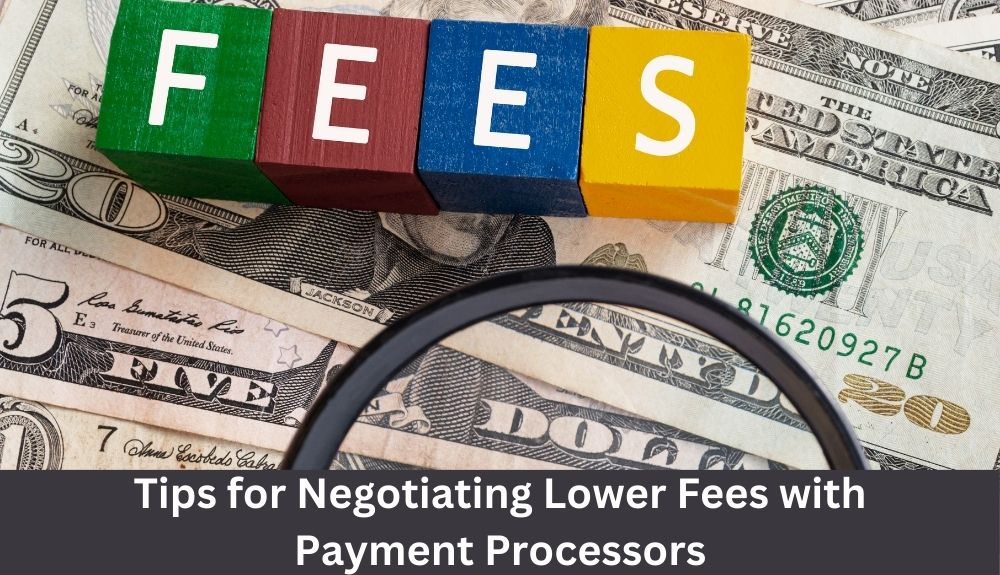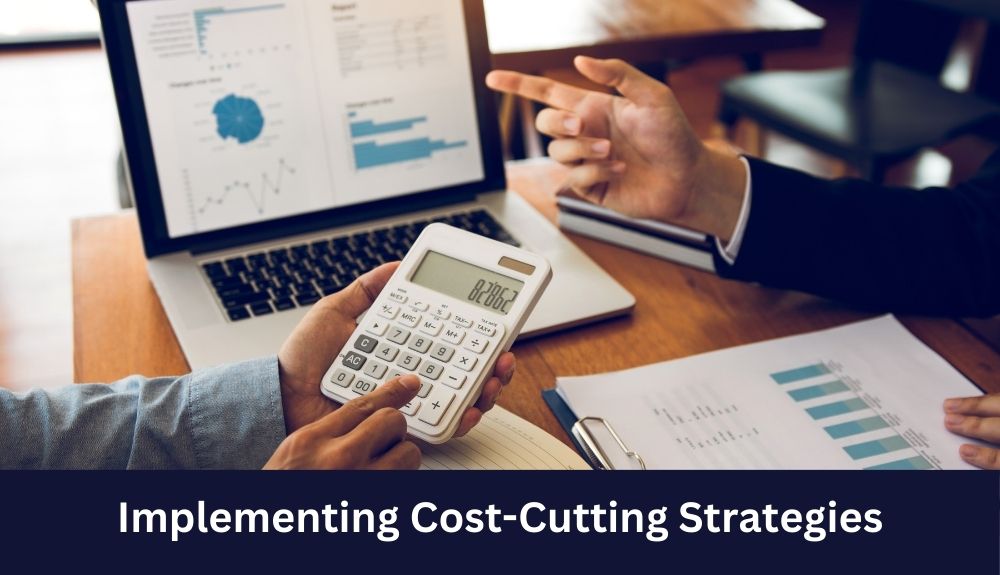Best Credit Card Processing Solutions Tailored for Every Industry

By merchantservices February 14, 2024
Payment processing fees can often eat into a business’s profitability, making it crucial for companies to find strategies that minimize these costs. Whether you’re a small startup or an established enterprise, understanding payment processing fees and implementing effective strategies can have a significant impact on your bottom line. In this blog post, we will explore various approaches to reducing payment processing fees and maximizing profitability. From negotiating lower rates with processors to exploring alternative payment methods, we’ve got you covered. So let’s dive in and discover the secrets to keeping more of your hard-earned money!
Understanding Payment Processing Fees
As a business owner, it’s essential to have a clear understanding of payment processing fees and how they impact your bottom line. Payment processing fees are charges imposed by financial institutions or third-party processors for handling electronic transactions. These fees can include interchange fees, assessment fees, and markup costs.
Interchange fees are set by card networks like Visa and Mastercard and represent a percentage of the transaction value plus a flat fee. Assessment fees are paid directly to the card network as part of their operating expenses. Markup costs are added by payment processors to cover their services.
The exact fee structure varies depending on various factors such as transaction volume, average ticket size, industry type, and negotiation skills with processors.
By comprehending these fee structures in detail, you can better evaluate different payment processor offerings and negotiate lower rates for your business. This knowledge empowers you to make informed decisions that align with your company’s financial goals.
Stay tuned as we explore more strategies to minimize payment processing fees coming up next!
Common Payment Processing Fee Structures
When it comes to payment processing fees, understanding the different structures can help you make informed decisions that minimize costs and maximize profitability.
1. Flat-rate fees: This structure charges a fixed percentage or flat fee for every transaction processed. While it may be convenient and easy to understand, it may not always be cost-effective for businesses with high-volume sales.
2. Interchange-plus pricing: This structure breaks down fees into two components – the interchange rate set by card networks and the processor’s markup. It offers transparency, allowing you to see the actual cost of transactions and negotiate better rates based on your business’s needs.
3. Tiered pricing: This structure categorizes transactions into tiers based on risk factors such as card type (e.g., rewards cards) or how transactions are processed (e.g., swiped vs. keyed). However, tiered pricing can often lead to higher overall fees due to hidden markups.
4. Membership/subscription-based models: Some processors offer membership programs where businesses pay a monthly fee in exchange for lower transaction rates or reduced per-transaction fees. These models can be beneficial if your business consistently processes a large number of transactions each month.
It’s important to carefully evaluate which fee structure aligns best with your business model and goals while considering factors such as average transaction size, volume, and types of payments received.
Tips for Negotiating Lower Fees with Payment Processors

When it comes to payment processing, fees can often eat into your profits. That’s why it’s important to know how to negotiate lower fees with your payment processors. Here are a few tips that can help you minimize those costs and maximize your profitability.
Do your research. Understanding the current market rates and industry standards will give you leverage when negotiating with payment processors. This knowledge will allow you to make informed decisions and push for lower rates.
Don’t be afraid to shop around. Different payment processors have different fee structures, so it’s worth exploring multiple options before settling on one. By comparing offers from various providers, you’ll be able to identify the most competitive rates available.
Another strategy is bundling services together. Some payment processors offer discounts if you use their additional services such as fraud protection or chargeback management. By taking advantage of these bundled packages, you may be able to negotiate lower overall fees.
Furthermore, consider the length of your contract term. Shorter-term contracts give you more flexibility in finding better deals down the line or switching providers if necessary.
Additionally, negotiate based on volume and transaction size. If your business has high monthly sales volumes or large average transaction sizes, use this as leverage during negotiations for better rates.
Lastly but importantly, maintain a good relationship with your chosen processor. Regular communication and feedback can go a long way in building trust and potentially securing lower fees over time.
Remember that negotiation is an ongoing process; don’t settle for less than what suits your business best! With these tips in mind, you’ll be well-equipped to engage in fruitful discussions with payment processors and minimize those pesky fees along the way.
Stay tuned for more strategies on managing payment processing fees!
Utilizing Alternative Payment Methods
As businesses strive to minimize payment processing fees and maximize profitability, one strategy worth exploring is utilizing alternative payment methods. These options offer flexibility for both customers and merchants, providing an opportunity to reduce costs while still offering a convenient and secure way to transact.
One popular alternative payment method is digital wallets. These virtual platforms allow customers to store their payment information securely on their mobile devices or computers. By accepting digital wallet payments, businesses can bypass traditional credit card processing fees altogether, saving significant amounts of money in the long run.
Another option is peer-to-peer (P2P) payment systems. With P2P platforms like Venmo or PayPal, customers can easily transfer funds between individuals without involving a traditional bank or credit card company. For businesses that frequently deal with small-scale transactions or have a strong online presence, integrating P2P payments into their checkout process can be advantageous.
Cryptocurrencies also present an alternative payment method that some businesses have started embracing. While still relatively new and not yet widely adopted, cryptocurrencies offer lower transaction fees compared to traditional methods while maintaining security and privacy benefits.
Furthermore, prepaid cards are becoming increasingly popular as an alternative form of payment. These cards work similarly to gift cards but can be loaded with cash by the customer themselves instead of being purchased outright. Accepting prepaid cards allows businesses to avoid interchange fees associated with credit card transactions while still offering a convenient option for customers who prefer not to carry cash.
By diversifying the available options for accepting payments beyond just credit cards, businesses open up opportunities for cost savings while catering to different consumer preferences. It’s important for each business owner to assess which alternative methods align best with their customer base and operational needs before implementing them into their existing infrastructure.
Regularly Reviewing and Analyzing Fees
To ensure you’re getting the most out of your payment processing system, it’s crucial to regularly review and analyze the fees associated with it. By doing so, you can identify any unnecessary expenses or areas where costs can be reduced.
Start by gathering all relevant data on your current payment processing fees. This may include transaction fees, interchange rates, chargeback fees, monthly service fees, and more. Once you have this information in hand, carefully examine each fee to understand its purpose and impact on your business’s profitability.
Look for any discrepancies or unexpected increases in fees compared to previous periods. This could indicate errors or hidden charges that need further investigation. Additionally, compare the rates offered by different payment processors to see if there are better options available that offer lower rates or more favorable terms.
In addition to reviewing individual fees, consider analyzing overall trends in your payment processing costs over time. Look for patterns or outliers that might signify opportunities for cost-cutting measures or negotiating better deals with your providers.
Regularly monitoring and analyzing your payment processing fees allows you to stay proactive in managing these expenses effectively. It puts you in a position of strength when negotiating with processors because you have solid data supporting any requests for lower rates or improved contract terms.
By making regular fee analysis an integral part of your financial management strategy, you can maximize profitability and keep unnecessary expenses at bay.
Implementing Cost-Cutting Strategies

When it comes to managing payment processing fees, one effective way to maximize profitability is by implementing cost-cutting strategies. These strategies involve finding ways to reduce expenses and streamline processes without compromising the quality or efficiency of your business operations.
One cost-cutting strategy is to optimize your payment process. By automating certain tasks and reducing manual errors, you can save time and money in processing payments. Look for payment processors that offer advanced tools and technologies that can simplify the payment process for both you and your customers.
Another strategy is to negotiate lower transaction rates with your payment processor. Take the time to research other providers in the market, compare their fees, and leverage this information during negotiations. Payment processors are often willing to lower their rates if they see potential business from a valuable client like yourself.
Furthermore, consider exploring alternative payment methods that may have lower processing fees compared to traditional credit card transactions. For example, digital wallets or cryptocurrency payments can sometimes offer more competitive fee structures.
Additionally, regularly reviewing and analyzing your fee structure is crucial for identifying any unnecessary costs or areas where savings can be made. Keep track of all incoming and outgoing payments related to processing fees so you have an accurate picture of how much you are spending on this aspect of your business.
Implementing internal cost-control measures such as training employees on efficient use of payment systems or tightening security protocols can help minimize avoidable charges associated with human error or fraud.
By implementing these cost-cutting strategies into your business operations, you’ll be able to minimize payment processing fees while maximizing profitability – a win-win situation for any business striving for success!
Conclusion: Importance of Managing Payment Processing Fees for Business Success
Managing payment processing fees is a crucial aspect of running a successful business. By understanding the various fee structures, negotiating lower rates with processors, and implementing cost-cutting strategies, businesses can significantly minimize their expenses and maximize profitability.
Payment processing fees can eat into a business’s profit margins if not managed effectively. By analyzing fees regularly and staying informed about industry trends, businesses can identify opportunities to reduce costs and optimize their payment processes.
Negotiating lower fees with payment processors is an essential strategy for minimizing expenses. Businesses should research different providers, compare pricing models, and leverage their transaction volume to negotiate better rates. It’s also important to review contracts carefully before signing them to ensure that there are no hidden or unnecessary charges.
Taking advantage of alternative payment methods can also help reduce processing fees. Many customers now prefer digital wallets or direct bank transfers over traditional credit card payments. By offering these options alongside credit card payments, businesses can diversify their payment channels while potentially lowering associated fees.
Regularly reviewing and analyzing fees is vital for identifying any inefficiencies or areas where costs could be reduced further. This includes closely monitoring chargebacks, refunds, and other factors that may contribute to higher processing costs. Armed with this information, businesses can make informed decisions on how to optimize their payment processes.
Implementing cost-cutting strategies such as batch processing transactions rather than individual ones or setting minimum purchase thresholds for certain types of payments could also be effective in reducing overall processing fees.
In conclusion: Managing payment processing fees is an ongoing process that requires attention to detail but offers significant benefits for business success. By understanding fee structures, negotiating lower rates with processors when possible, utilizing alternative payment methods strategically, regularly reviewing and analyzing expenses related to payments,and implementing cost-cutting strategies wherever applicable – businesses can minimize expenditure while maximizing profitability in today’s competitive market landscape!
